- Home
- Peter Ackroyd
London: The Biography Page 10
London: The Biography Read online
Page 10
Certain areas produced particular noises. The metal foundries of Lothbury, for example, produced “a loathsome noise to the by-passers, that hath not been used to the like” and the quarter of the blacksmiths was permeated “with the noise of and sound of their hammers amp; anuiles.” There was also the general circumambient noise of the London streets where, according once more to Thomas Dekker, “carts and Coaches make such a thundring” and where “in the open streetes is such walking, such talking, such running, such riding, such clapping too of windowes, such rapping at Chamber doores, such crying out for drink, such buying vp of meate, and such calling vppon Shottes, that at every such time, I verily beleeue I dwell in a Towne of Warre.” Images of violence and assault spring unimpeded from the experience of London sound. In 1598 Everard Guilpin wrote a verse satire upon “the peopled streets” of London, which he depicts as a “hotch-potch of so many noyses … so many severall voyces.” Here the heterogeneity of London is seen as an aspect of its noise. Yet without the perpetual hum of traffic and machines which seems to characterise the noise of contemporary London streets, individual voices would have been heard more clearly. The wooden and plaster houses on either side of the main thoroughfares acted as an echo-chamber, so that one of the characteristics of the sixteenth-century city would be a continual babble of voices making up one single and insistent conversation; it might be termed the conversation of the city with itself.
There were certain places where the voices reached such a pitch and intensity that they could also be characterised as a London sound. The interior of St. Paul’s Cathedral was known for its particular timbre. To quote once more from Bruce Smith’s account, “the noyse in it is like that of Bees, a strange humming or buzze, mixt of walking, tongues, and feet: It is a kind of still roare or loud whisper.” The Royal Exchange, where merchants from all over the world congregated, was “vaulted and hollow, and hath such an Eccho, as multiplies euery worde that is spoken.” At the centre of commerce there is a great reverberation, as if the conduct of finance could only take place within thunder. Then, in the taverns to which the dealers and merchants retired, “men come here to make merry but indeed make a noise.” So, in the places of power and speculation, the insistent sound is that of raised male voices. Samuel Johnson once remarked upon the subject of taverns, “Sir, there is no other place where the more noise you make, the more welcome you are.” It is a suggestive observation, with its implications of theatricality and aggression as part of the London experience; the more “noise” you make, the more you become a true inhabitant of the city. In the theatres, too, there was unabated noise, with the hucksters and the criers and the huddled throng; everybody talking together, breaking nuts, and crying out for ale.
On the streets outside were the bells, the wagons, the cries, the barking dogs, the squeaking of shop signs blowing in the wind. But there was another sound, relatively unfamiliar to Londoners of later generations. It was that of rushing water. The sixteenth-century city was crossed by streams and rivers. The sound of water from fifteen conduits mingled with the noise of the Thames and its lapping tides, audible along all the lanes and thoroughfares which led to the river. Great wheels were used to pump water from the Thames into small wooden pipes, and their endless grinding and reverberation added materially to the overwhelming noise of the city.
In 1682 it was still the same endless sound, like a great shout perpetually renewed. “I lie down in Storms,” Sir John Oldham announced in that year, “in Thunders, rise.” He evokes the “Din” of the “restless Bells” as well as
Huzza’s of Drunkards, Bellmen’s midnight Rhimes
The noise of Shops, with Hawkers early Screams.
The allusion here is to a city that is always wakeful; there is no end to its activity, neither at night nor at day, and it lives continually. In the seventeenth century, too, London was still a city of animals as well as people. Samuel Pepys was disturbed one night by a “damned noise between a sow gelder and a cow and a dog.” The noise of horses, cattle, cats, dogs, pigs, sheep and chickens, which were kept in the capital, was confounded also with the sound of the great herds of beasts being driven towards Smithfield and the other open markets; London consumed the countryside, or so it was said, and the noise which accompanied its devouring appetite was everywhere apparent.
It has often been observed how foreigners, or strangers, were astonished and perplexed by the noise of London. On one level it was regarded as representative of London’s “license,” where the boundary between anarchy and freedom remained ambiguous. In a city filled with an implicitly egalitarian spirit, each inhabitant was free to occupy his or her own space with endless noisy expressiveness. In Hogarth’s engraving of 1741, The Enraged Musician, a foreign visitor is assailed by the sound of a sow-gelder (perhaps a descendant of the one who annoyed Pepys), by howling cats, a girl’s rattle, a boy’s drum, a milkmaid’s cry, a ballad-seller’s plaintive call, a knife-grinder and a pewterer at their respective trades, a carillon of bells, a parrot, a wandering “haut-boy” or oboe player, a shrieking dustman and a barking dog. The significance of these heterogeneous images is that they are all striking and familiar London types. Hogarth is here celebrating the noises of the city as an intrinsic aspect of its life. It is the prerogative of Londoners to make noise; therefore, noise is a natural and inevitable part of their existence in the city. Without that right, for example, many of the vendors and street-sellers would perish.
Those who came to the city as visitors were not of course necessarily able to share Hogarth’s implicit enthusiasm for this native uproar. In Tobias Smollett’s novel of 1771 Humphry Clinker is dismayed by its nocturnal aspects. “I start every hour from my sleep, at the horrid noise of the watchmen bawling the hour through every street and thundering at every door,” thus illustrating the fact that time itself can be imposed with a shout. In the morning, too: “I start out of bed, in consequence of the still more dreadful alarm made by the country carts, and noisy rustics bellowing green peas under my window.” Commerce, as well as time, must be understood in raucous terms. Joseph Haydn complained that he might fly to Vienna “to have more quiet in which to work, for the noise that the common people make as they sell their wares in the street is intolerable.” Yet there were others who so wished to enter the spirit of London that they rejoiced in the clamour and embraced it like a lover. “The noise,” Boswell wrote upon his first arrival in London in 1762, “the crowd, the glare of the shops and signs agreeably confused me.” He arrived in the capital by way of Highgate, from which eminence he would already have heard the noise. “Let anyone ride down Highgate Hill on a summer’s day,” Laetitia Landon wrote in the early nineteenth century, “see the immense mass of buildings spread like a dark panorama, hear the ceaseless and peculiar sound, which has been likened to the hollow roar of the ocean, but has an utterly different tone … then say, if ever was witnessed hill or valley that so powerfully impressed the imagination with that sublime and awful feeling, which is the epic of poetry.” So the noise of the city partakes of its greatness.
This sense of disturbing, almost transcendental, sound was essentially a discovery of the nineteenth century when London represented the great urban myth of the world. Its noise became an aspect of its mightiness, and horror; it became numinous. In 1857 Charles Manby Smith, in the paradoxically entitled The Little World of London, described it as “that indefinable boom of distant but ever-present sound which tells that London is up and doing, and which will swell into a deafening roar as the day grows older [and] now rises faintly but continuously upon the ear.” The “roar” here suggests the presence of some great beast, but more significant is this sense of a continuous, distant sound as if it were a form of meditation or self-communing. We read in the same narrative of “the uninterrupted and crashing roar of deafening sounds, which tell of the rush of the current of London’s life blood through its thousand channels-a phenomenon, however, of which the born Londoner is no more unpleasantly conscious than is the Indian
savage, cradled at the foot of a cataract, of its everlasting voice.” This is an interesting image, which identifies London itself with some kind of natural force; at the same time it covertly admits savagery among the citizens, in a locale both untamed and untamable.
From three miles’ distance, in what was then an “outlying” suburb soon to be drawn within the vortex of the city, the sound of London is “like the swell of the sea-surge beating upon a pebbly shore when it is heard far inland.” Here is a haunting impression of proximity to the great city. That perpetual sound was variously compared to Niagara, in its persistence and remorselessness, and to the beating of a human heart. It is intimate and yet impersonal, like the noise of life itself. That same intuition was vouchsafed to Shelley who wrote of
London: that great sea whose ebb and flow
At once is deaf and loud, and on the shore
Vomits its wrecks, and still howls on for more.
The adjectives “deaf” and “loud” summon up an image of pitiless activity; the verb “howls” one of fear, pain and rage in equal measure. The noise is one of greed and helplessness, as if it were in a perpetually infantile state. Its noise is ancient, but always renewed.
A celebrated American of the nineteenth century, James Russell Lowell, has written: “I confess that I never think of London, which I love, without thinking of that palace which David built for Bathsheba, sitting in hearing of one hundred streams-streams of thought, of intelligence, of activity. One other thing about London impresses me beyond any other sound I have ever heard, and that is the low, unceasing roar one hears always in the air; it is not a mere accident, like a tempest or a cataract, but it is impressive, because it always indicates human will, and impulse, and conscious movement; and I confess that when I hear it I almost feel as if I were listening to the roaring loom of time.”
Here, then, is a further sense of the numinous. London becomes the image of time itself. The great “streams” of thought and intelligence never cease; to change the metaphor, they resemble cosmic winds. But is the sound of the city also the sound of time itself? The noise would then be striated by the shuttling of the future into the past, that instantaneous and irremediable process that takes place in a “present” moment that can never really be glimpsed or known. The sound is then one of vast loss, the “howl” of which Shelley writes. In the phrase of T.S. Eliot, a poet whose vision of time and eternity sprang directly from his experience of London, “All time is unredeemable.” London is unredeemable, too, and we may also think of its noise as comprising a vast mass of subjective private times continually retreating into non-existence.
Even in the middle of that maelstrom, however, it was possible to pick out and to remember specific London sounds which belonged to that place and to no other in the nineteenth century. There were the notes of the “German band,” with their horn and trombone and clarionet; there was the lament of the barrel organ and the barrel piano; there was the cry of “Lucifers” from an old man bearing a tray of matches. There was the rumble of the scavenger’s cart drawn by great horses “adorned with tiaras of tinkling bells.” There was the incessant clatter of horses’ hooves which, when they departed, left London bereft. “I shall miss the ‘orses’ feet at night, somethin’ shockin’,” one Cockney lady put it, “they was sech comp’ny like.” There was of course the continual noise of wheels, endlessly turning with their own resistless momentum. “To the stranger’s ear,” a journalist wrote in 1837, “the loud and everlasting rattle of the countless vehicles which ply the streets of London is an intolerable annoyance. Conversation with a friend whom one chances to meet in midday is out of the question … one cannot hear a word the other says.” Jane Carlyle, having settled in London with her husband Thomas, asked a correspondent in 1843: “Is it not strange that I should have an everlasting sound in my ears, of men, women, children, omnibuses, carriages, glass coaches, street coaches, wagons, carts, dog-carts, steeple bells, door-bells, gentlemen-raps, twopenny post-raps, footmen-showers-of-raps, of the whole devil to pay.” It is as if the whole world had broken in upon her. That same sense emerges in a book entitled Memories of London in the 1840s where the constant roar of traffic was described “as if all the noises of all the wheels of all the carriages in creation were mingled and ground together into one subdued, hoarse, moaning hum.”
Wooden paving was laid upon many of the main thoroughfares in the 1830s-Oxford Street and the Strand being two particular examples-but nothing could really withstand the encroaching noise of the city. In The Strange Case of Dr. Jekyll and Mr Hyde (1886) R. L. Stevenson writes of “the low growl of London from all round.” In a life of Tennyson it is remarked that the poet “always delighted in the ‘central roar’ of London.” “This is the mind,” he told his son, “that is a mood of it.” Charlotte Brontë heard that “roar” and was deeply excited by it. In each instance the presence of a living thing is being registered, perhaps with some disquiet; it is one great life comprising the sum of individual lives so that, at the end of Little Dorrit, the little heroine and her husband “went quietly down into the roaring streets, inseparable and blessed; and as they passed along in sunshine and shade, the noisy and the eager, and the arrogant and the froward and the vain, fretted and chafed, and made their usual uproar.” Those who are “blessed” are silent, like strangers in the city, but the “eager” and the restless maintain their uproar. Or, rather, the sound of London is transmitted through them.
It has changed during the course of the twentieth century. Those at the beginning recall the noise of horse-driven vans and the apoplectic roar of the omnibuses mingled with the strangely peaceful and satisfying sound of horses’ hooves. It is perhaps not surprising that the writers who dwelled in the city in the first decades of the twentieth century, should instil an enchantment in those noises; it is as if they were aware of their imminent destruction.
In 1929, according to the Journal of the London Society, a deputation from the British Medical Association had visited the Ministry of Health to suggest that “city noise” was “a menace to public health.” Instead of the sound of London being celebrated as a token of life itself, or at least of the energy of the city, it was now being construed as injurious and unwelcome. It had become more uniform and monotonous so that, two years later, a report noted that “people are beginning to rebel against this disturbing, wearying factor in their lives.” It had also become more impersonal and, in response to its dehumanising potential, the measurement of the “decibel” was introduced. Various sources of what was now considered a nuisance were reported. It offers an odd contrast with Hogarth’s print of The Enraged Musician, surrounded by human sources of sound, to note that the new disturbers of the peace in the 1930s included the pneumatic street drill, the motor horn, building construction, and the railway steam-whistle described as “harsh and grating.” Much attention was paid to the “unnatural” quality of London noise-“a riveter is equal to 112 decibels, whereas thunder can register only 70”-thus reintroducing the old notion of a city intrinsically opposed to natural laws of growth and development. It was also suggested that the sound of London had a wholly deleterious effect upon “the brain and nervous system,” creating fatigue, inattention and general weariness.
D.H. Lawrence had a peculiar intuition of this change in the city’s noise. He had considered it, in the first decade of the twentieth century, as an expression of “the vast and roaring heart of all adventure” with the emphasis upon “roar” or “uproar” as a token of exhilaration; but then the traffic had become “too heavy.” This was also the gist of official reports, so that the novelist can be presumed to have touched upon an authentic alteration. “The traffic of London used to roar with the mystery of man’s adventure on the seas of life” but now “it booms like monotonous, far-off guns, in a monotony of crushing something, crushing the earth, crushing out life, crushing everything dead.”
The reiterated note of monotony is entirely characteristic of descriptions of modern London sound. Virg
inia Woolf described the noise of traffic as “churned into one sound, steel blue, circular” which adequately conveys the artificiality or impersonality of the circumambient noise. In recent years, too, there have been reports of a low humming sound which can be discerned everywhere. It is an accompaniment of fluorescent light, perhaps, or of the vast electronic systems working continuously beneath the surface of the city; it is now the low-level “background” noise which masks other sounds. The noise of cars and cooling systems has changed the air of London in every sense, principally by dulling down the variety and heterogeneity of sound. The great roar of nineteenth-century London is today diminished in intensity but more widespread in its effects; from a distance it might be recognised as an incessant grinding sound. The image would no longer be that of a sea but, rather, of a machine. The beating “heart” of London can no longer be credited with human or natural attributes.
The sound of voices, once such an intrinsic aspect of the street, has now been marginalised-except for the individual voice responding to the call of the mobile telephone, in a manner louder and more abrupt than that of ordinary conversation. Yet two aspects of these changing soundscapes have remained constant. Native Londoners have for many centuries been known to talk louder than their contemporaries, with a marked tendency towards shouting. London has become one unyielding and unending shout. There is a second characteristic noise. If you stand in Lombard Street at any time of the day, for example, that narrow thoroughfare like others in the vicinity echoes to hurrying footfalls. It has been a continuous sound for many hundreds of years, in the very centre of the City, and it may be that the perpetual steady echo of passing footsteps is the true sound of London in its transience and in its permanence.

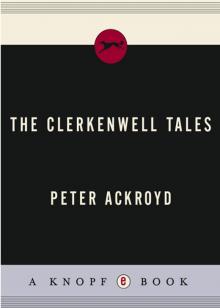 The Clerkenwell Tales
The Clerkenwell Tales The Canterbury Tales
The Canterbury Tales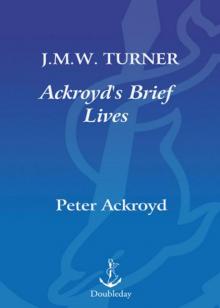 J. M. W. Turner
J. M. W. Turner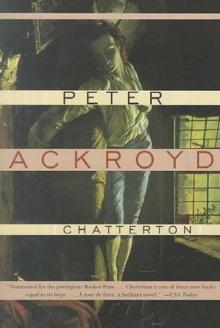 Chatterton
Chatterton The Canterbury Tales – A Retelling
The Canterbury Tales – A Retelling Alfred Hitchcock
Alfred Hitchcock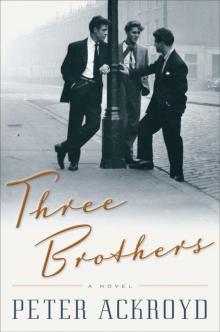 Three Brothers
Three Brothers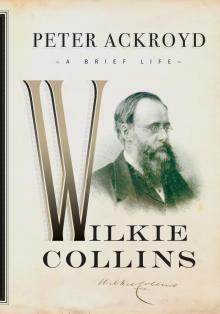 Wilkie Collins
Wilkie Collins Venice
Venice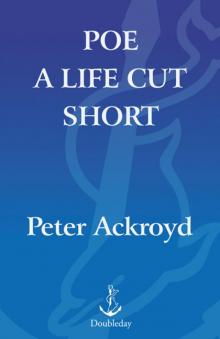 Poe
Poe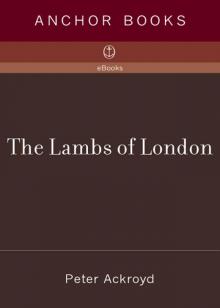 The Lambs of London
The Lambs of London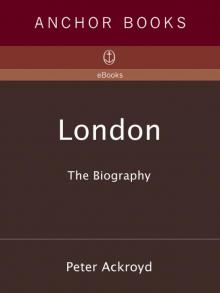 London
London Queer City
Queer City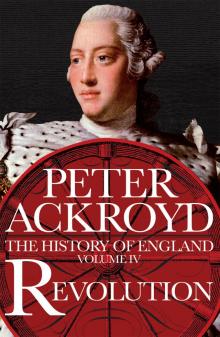 Revolution, a History of England, Volume 4
Revolution, a History of England, Volume 4 Venice: Pure City
Venice: Pure City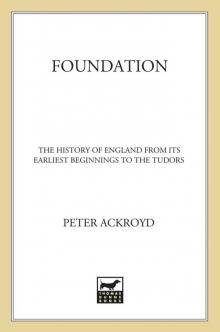 Foundation
Foundation Thames
Thames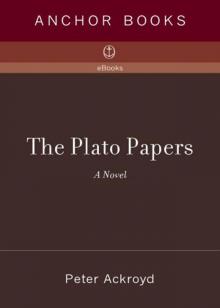 The Plato Papers
The Plato Papers The house of Doctor Dee
The house of Doctor Dee Rebellion: The History of England from James I to the Glorious Revolution
Rebellion: The History of England from James I to the Glorious Revolution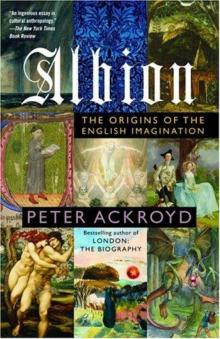 Albion: The Origins of the English Imagination
Albion: The Origins of the English Imagination The Fall of Troy
The Fall of Troy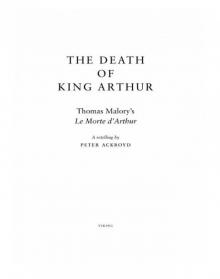 The Death of King Arthur
The Death of King Arthur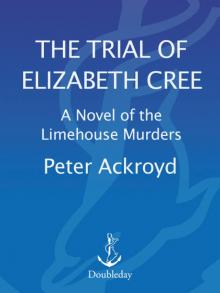 The Trial of Elizabeth Cree
The Trial of Elizabeth Cree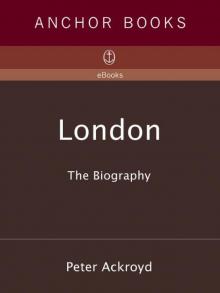 London: The Biography
London: The Biography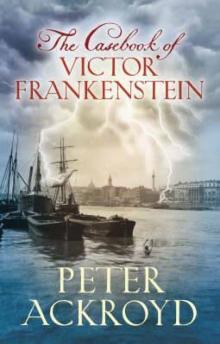 The Casebook of Victor Frankenstein
The Casebook of Victor Frankenstein Hawksmoor
Hawksmoor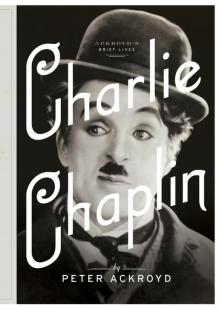 Charlie Chaplin
Charlie Chaplin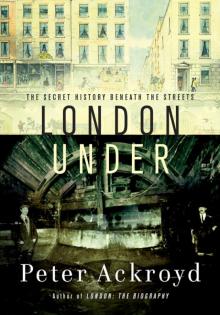 London Under
London Under